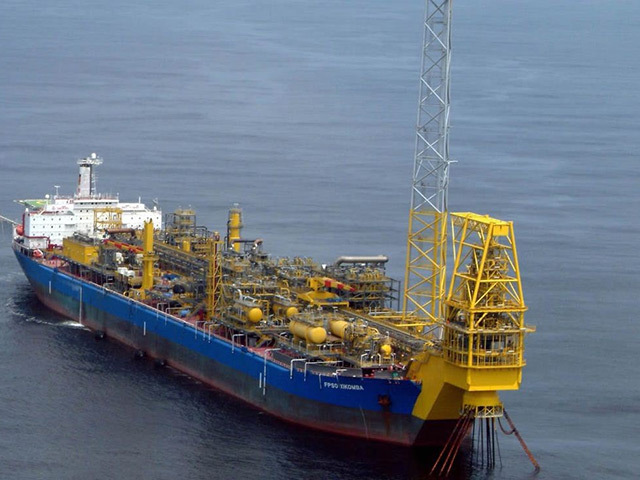
SBM Offshore is to provide the FPSO (floating production storage and offloading vessel) for Shell’s Stones development project in the US Gulf of Mexico.
The contract falls within a framework agreement reached between Shell and SBM in March last year. Indeed it is the first.
The baseline value of the arrangement has not been disclosed. However, it will run for an initial period of 10 years with future extension options up to a total of 20 years.
However, the total asset value of the vessel will come in at around $1billion.
The Stones development is located in 2,896m (9,500ft) of water some 320km (200 miles) offshore Louisiana in the Walker Ridge area. When installed, the Stones vessel will be the deepest FPSO development in the world.
Core of the project is a converted Suezmax trading tanker, which will be fitted with a mooring turret and disconnectable buoy (buoyant turret mooring or BTM).
This system will allow the ship to weathervane in normal conditions and disconnect if necessary to avoid the full force of a hurricane.
SBM says the BTM will be configured with steel lazy-wave risers (SLWR) which will be a first application for a disconnectable FPSO.
The mooring system will also incorporate the ability to adjust line tension during operations by use of an In-line mooring connector (ILMC).
Behind the designwork and engineering is SBM’s 30 years of turret experience including the delivery of nearly 50 systems will be leveraged to supply this pioneering BTM system.
The Stones FPSO will be a typical second generation design with a processing capacity of 60,000 barrels of oil and 15million cu.ft of gas per day. No water injection facilities are specified at this time though retrofitting would appear to be inevitable.
The vessel will be able to store 800,000 barrels of oil, while gas will go directly for export. Total topsides weight will be in the order 7,000 tons. Stones was discovered in 2005. It was in May 2005 that Shell announced its intention to develop the asset, the reserves of which are estimated at 2billion barrels oil equivalent.
The first phase of development will comprise two subsea wells producing to the FPSO.
Later, six more development wells will help to increase the production capacity of the field. Peak production of the first phase of development is expected to reach 50,000 barrels oil equivalent per day.
Recommended for you
